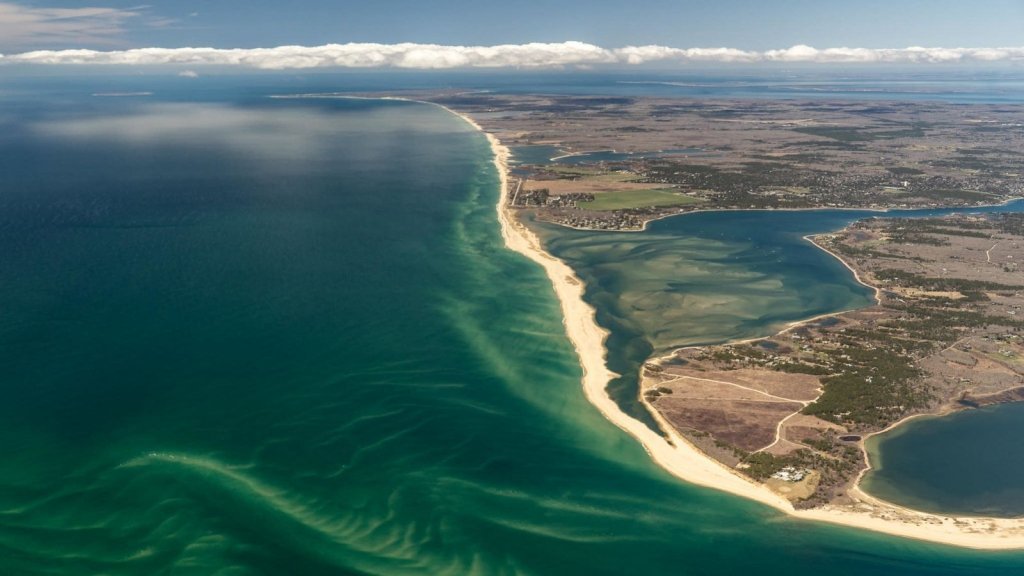Researchers Discover Giant Freshwater Aquifer off U.S. East Coast

In a welcome bit of news as water shortages hit majorcities worldwide, researchers have discovered an enormous freshwater aquifer off the U.S. East Coast. The researchers state it could suggest other such aquifers trapped beneath the salty seas in ocean sediments throughout the earth.
Tips of the aquifer’s existence go all the way back to the 1970s, when businesses drilling for oil from the Eastern seaboard would occasionally encounter relatively freshwater instead. But researchers weren’t aware of its full extent until A columbia-led research expedition set out to map subterranean water offshore in 2015. The results of that analysis, published Tuesday in Scientific Reports, implies this thing’s gigantic: about 650 feet deep, extending up to 50 miles wide, and extending from New Jersey to Massachusetts and possibly farther.
All told, the scientists estimate the aquifer contains some 670 cubic milesof water. As noted in a press launch, if taken to the area it could create a lake spanning 15,000 square miles.
“There’s been drilling on all continents showing this [offshore subterranean freshwater] occurs everywhere,” lead study author Chloe Gustafson, a PhD prospect at Columbia’s Earth Institute, told Earther. “But drilling boreholes are simply point measurements. Our study verifies [an] extensive and robust aquifer extending from the shore.”
To reach that conclusion, the researchers surveyed off the shore of New Jersey, where boreholes previously indicated freshwater, and from the coast of Martha’s Vineyard, where onshore drill holes and models hinted at the clear presence of freshwater in offshore sediments. They used two different electromagnetic (EM) mapping techniques, deploying passive receivers regarding the seafloor to measure ambient EM fields, and towing a transmitter behind the ship that emitted its own EM field. As Gustafon explained, when EM areas penetrate the seafloor, the nature of the waves changes as they interact with water of various conductivities. The two create distinct EM profiles since saltwater is much more conductive than freshwater.
Hatched area shows the likely extent for the aquifer scientists have mapped off the U.S. eastern seaboard, with triangles showing ship tracks. The dotted white line shows the southern extent of the Laurentide Ice Sheet throughout the last Ice Age.
This analysis revealed a continuous, low-salinity aquifer system in both locations, the majority of it separated from the overlying seawater by hundreds of legs of sediment. Given the similarities between the two sites and the fact that onshore aquifers exist down and up the coast, the researchers believe it’s very likely the aquifer spans this entire stretch of coastline—although doing more surveys between New Jersey and Massachusetts in order verify that could be a “next logical action,” Gustafon said.
You might wonder how a freshwater that is giant winds up buried beneath hundreds of legs of seawater. The likely response is that it didn’t use to be at underneath for the ocean at all.
Over the last Ice Age, sea levels were lower and a lot of what’s now the shelf that is continental have been exposed land. İn those days, streams and rain could have started to build up an aquifer from the surface. In the case of Martha’s Vineyard, that was buried beneath the Laurentide Ice Sheet, glacial meltwater could have also contributed. With time, more sediments would have already been deposited, trapping this water set up. Eventually, the Earth started, the ice sheets retreated, ocean amounts rose, and the aquifer found itself in the bottom of the sea.
A working theory scientists can now try to test by taking samples of the water and looking at the mix of isotopes present at least, that’s. There’s also proof that the aquifer is being recharged in modern times — as Gustafon noted, her analysis discovered the freshest water closest to the shoreline. “That indicates to us that freshwater is originating from onshore and making its way offshore,” she stated.
Nevertheless the aquifer got there, its presence raises the tantalizing chance of other large aquifers off coastlines around the entire world, that could become a resource for water-strapped seaside towns as populace development and climate change stretch onshore resources slim. It’s a resource that would have become mined, effectively, if offshore aquifers turn out to be largely glacial in nature, that could make them non-renewable. Additionally, the aquifer off the U.S. East Coast does contain lower levels of salt, and some desalination would have to ensure it is drinkable, which comes with unique consequences that are environmental.
Nonetheless, Gustafon is hopeful this discovery could wind up being truly a boon for humanity in a future that is thirstier.
“In the scenario associated with East Coast of the U.S., we’re not actually short on water,” she said. “In regions where water resources are more extended, I think this could be a really unique resource that people don’t typically think about.”




